Article
Applying a dentine bonding agent to freshly cut dentine at the time of tooth preparation and prior to impression taking is referred to as immediate dentine sealing (IDS)1,2
The value of this technique is that:
In this technique tip a maxillary left first molar was prepared for a silica-based crown, which was adhesively cemented using the IDS technique. The tooth was of reduced clinical height and an adhesively retained restoration was selected to improve retention.
Following tooth preparation, significant areas of exposed dentine are generated. The tooth stump is etched for 15 seconds with 32% phosphoric acid. Using a 3-step etch-rinse adhesive system, primer is then applied and evaporated for 90 seconds using an aspirator, after which adhesive is applied and polymerized. To ensure curing of the oxygen inhibited layer, glycerine is applied and the tooth is re-polymerized to:
Then an impression is recorded and the restoration is fabricated (Figure 1).
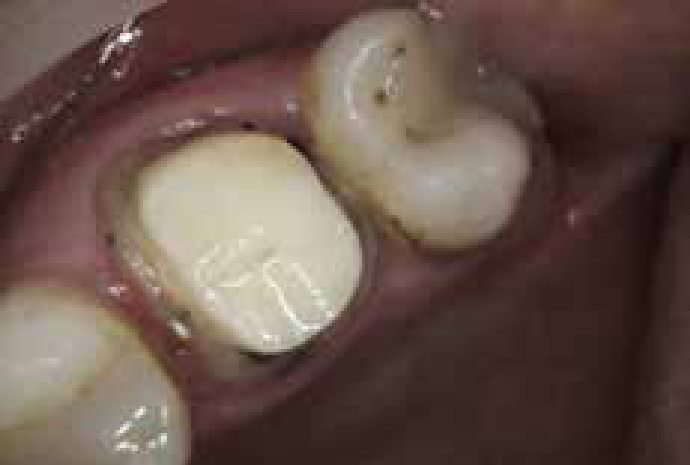
At the next visit, the tooth requires cleaning before cementation. This is achieved using pumice or by microblasting the tooth surface with 50 micron aluminium oxide for 5 seconds.
The crown is then prepared for cementation. The silica-fitting surface of the crown is etched using hydrofluoric acid 9.5% for 60 seconds and rinsed for 30 seconds (Figure 2).
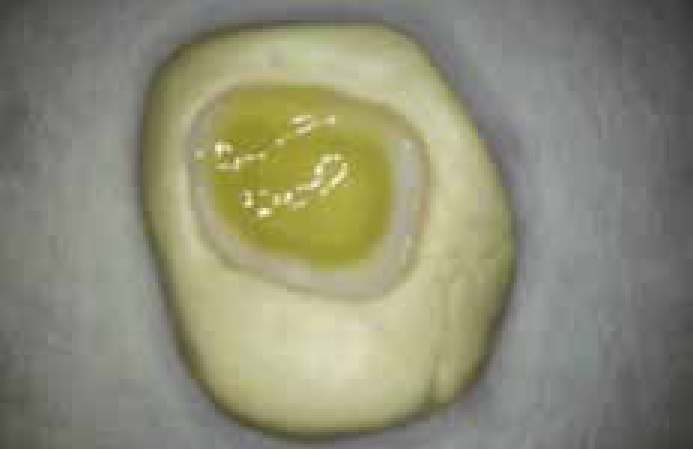
The fit surface is re-etched by scrubbing with 32% phosphoric acid for 2 minutes followed by rinsing and immersion in an ultrasonic bath for 2 minutes. Silane is applied and allowed to evaporate for 5 minutes (Figures 2, 3).
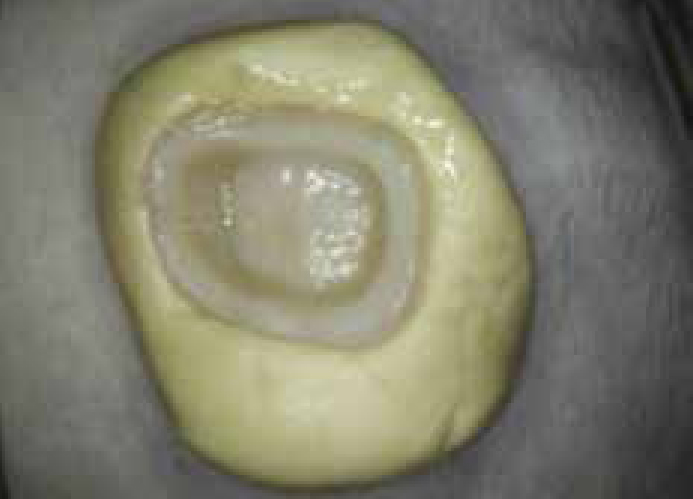
The tooth stump is then re-etched for 15 seconds with 32% phosphoric acid, rinsed and dried. A single coat of adhesive is applied to the tooth but not polymerized.
A single coat of adhesive is then applied to the restoration and not polymerized. A composite cement is applied to the fit surface of the restoration and can be pre-warmed to reduce viscosity (Figure 4).
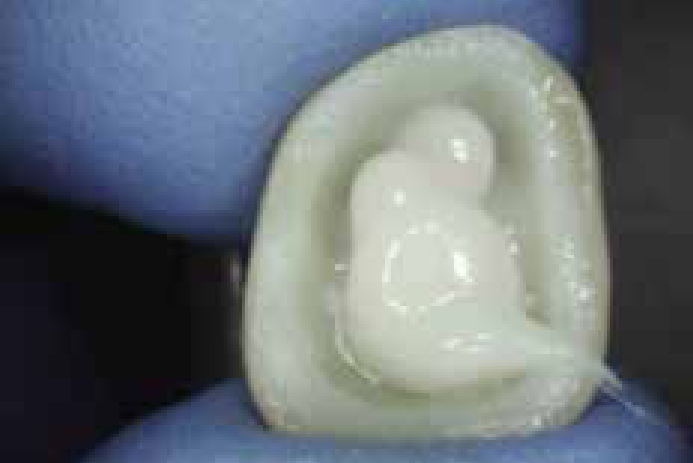
The crown is seated, light polymerized and excess removed. Glycerine is applied to the margins and the restoration re-cured to polymerize the oxygen inhibition layer (Figure 5).
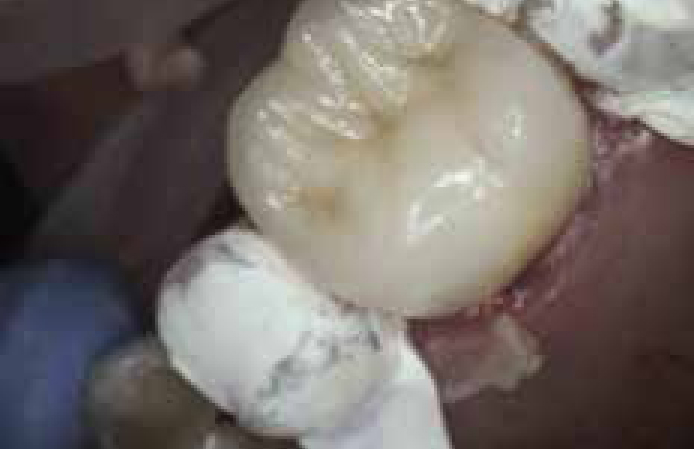
This technique can be applied to indirect restorative procedures where tooth preparation exposes dentine and the intaglio surface of the restoration can be etched. This includes porcelain veneers, and restorations with a leucite or lithium disilicate framework. IDS may also be useful for improving retention for short clinical crowns or excessively tapered preparations.1–4
